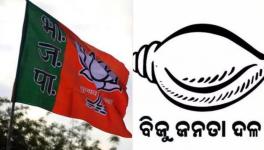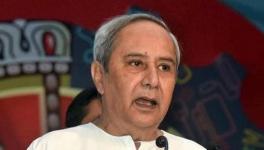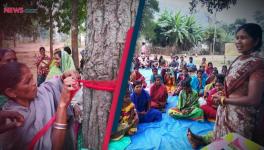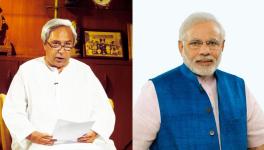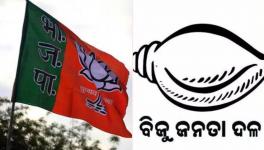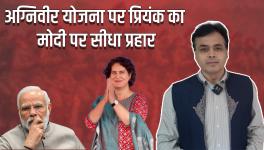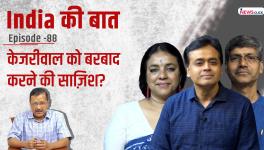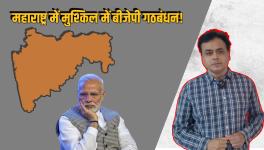Adivasis Have Lower Standards of Living, 82% of Households Heads Not Matriculates
Representational use only.
The Adivasi population of India has poorer standards of living compared to the non-Adivasi population, according to Status of Adivasi Livelihood Report, 2021, published in April by the Professional Assistance for Development Action. The report is an attempt to understand the status of livelihood of Adivasis by focussing on Jharkhand and Odisha.
Scheduled Tribes (STs) form about 8.6% of the country’s population. A large majority of them are classified as ‘hills and forests’ tribes. Article 244 of the Constitution enjoins the State to identify areas inhabited dominantly by tribal communities to nurture them and their identity in these regions and to integrate them into the development process.
Article 275 makes explicit provisions for making a financial allocation to states towards that end. Several specific programmes have been formulated and implemented by several states to promote the welfare of tribal people in addition to the centrally supported tribal sub-plans funded under Article 275. However, the report pointed out that little information is available on the outcome of efforts for tribal development.
EDUCATION, LITERACY AND INCOME
Heads of households of more than 82% Adivasi and 72% non-Adivasi homes are not even matriculated (class 10) in Jharkhand. These numbers are 90%, 87% and 82% for Particularly Vulnerable Tribal Groups (PVTG), Adivasi and non-Adivasi respectively in Odisha. Except for non-Adivasis in Jharkhand, the percentage of female matriculates and above is more than males.
The average total functional literacy score out of 30 for males is 12 for Adivasi and 18 for non-Adivasi in Jharkhand. In Odisha, the are 11, 10 and 14 for PVTG, Adivasi, non-Adivasis respectively. Scores for women are generally lower in all categories and extremely low for PVTG women in both the states.
Researchers conducted a functional literacy test with the respondents and their spouses, wherever available, from the sampled households. The test result showed that around 45% of males and 63% of females from Adivasi households in Jharkhand can’t read or write. For the non-Adivasi households, the corresponding figures from Jharkhand were 30% and 52%. In Odisha, 55% of males and 75% of females from Adivasi households can’t read or write at all. The corresponding figures for non-Adivasis are 38% and 55% and for PVTGs are 42% and 73%.
On average, Adivasi homes in Jharkhand earn Rs 75,000 per year and Rs 61,000 in Odisha. Non-Adivasi homes in the same resource setting in Jharkhand earn Rs 70,000. Odisha non-Adivasi homes earn Rs 76,000. Major sources of income are farm, wage work, salaries, pensions and non-farm businesses.
DIET AND FOOD SECURITY
In Jharkhand, 54% of Adivasi and 77% of non-Adivasi households have acceptable dietary diversity. The data from Odisha show a better situation with 69% Adivasi and 90% non-Adivasis having acceptable dietary diversity. Only 48% of PVTG households in Odisha have acceptable dietary diversity. Data for the female members of households in Jharkhand shows a pattern similar to that of the other members of the households; in Odisha, the female members of both Adivasi and non-Adivasi households have lower dietary diversity as compared to other members. The score for PVTGs in Odisha shows a bleak picture as compared to both Adivasis and non-Adivasis.
Twenty-five percent of Adivasis and 19% of non-Adivasis in Jharkhand are severely food insecure. In Odisha, 12% of Adivasi households and 16% of non-Adivasi households are severely food insecure. The female member of a household is slightly more food secure across categories in both the states.
In Jharkhand, 50% of male and 53% of female Adivasi children are malnourished. For non-Adivasis in Jharkhand, the corresponding figures are 61% and 46%. In Odisha, 48% of male and 60% of female children from the Adivasi community are malnourished. The corresponding figures for PVTG are 71% and 60%. For non-Adivasis in Odisha, the corresponding figure for both male and female children is 55%.
In conclusion, the report said: “Poverty, misery, marginalisation and deprivation persist among the Adivasis of India in general and those of central India in particular. Their displacement and dispossession by mining, industries and construction of dams, and the curtailment of their rights and access to the forest have caused this to a great extent.”
It added: “Adivasis’ access to public service, education, landholding, annual income, food security, nutrition status of children covered in this report show their overwhelming deprivation. The report shows that the situation of non-Adivasis from the same geography is a little better. They—the SCs, OBCs, minorities and a few general castes—too lag the national averages on most socio-economic criteria.”
Get the latest reports & analysis with people's perspective on Protests, movements & deep analytical videos, discussions of the current affairs in your Telegram app. Subscribe to NewsClick's Telegram channel & get Real-Time updates on stories, as they get published on our website.









